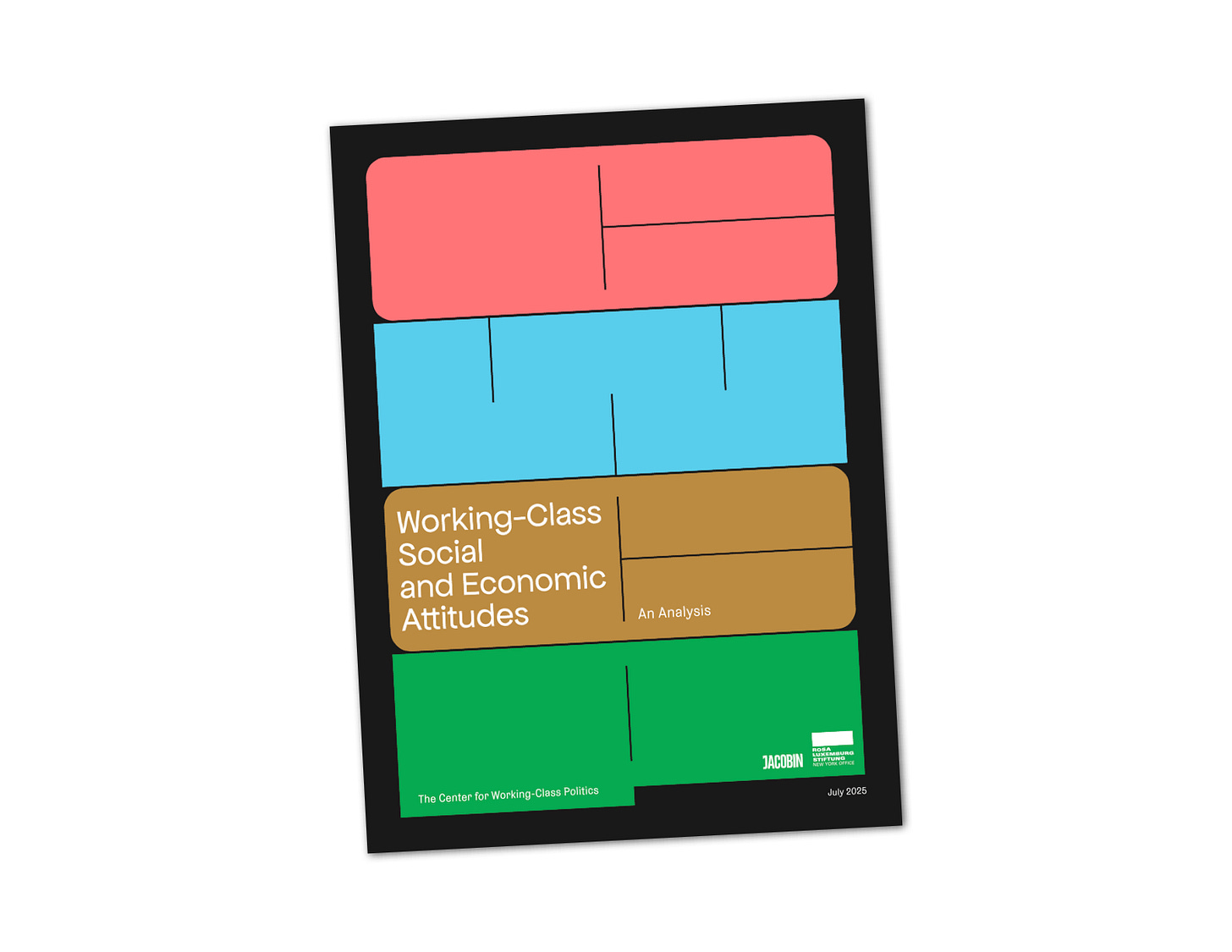New Report: Working-Class Social and Economic Attitudes
The message is clear: economic populism must be the core of progressive appeals to working-class voters.
A new report from the Center for Working‑Class Politics and Jacobin Magazine dives deep—examining 60 years of public‑opinion data—to reveal where working-class voters stand on the issues, and how their views compare to middle and upper-class Americans. The message is clear: economic populism must be the core of progressive appeals to working-class voters.
The Democrats’ working-class problem is not going away. In fact, it’s only getting worse — expanding beyond Donald Trump’s base of working-class whites to now include working-class Latinos and even a significant share of black men. Debates rage on about how the Left can win back these workers. Influential pollster and Democratic consultant David Shor and the prominent liberal think tank Third Way have argued that the non-college-educated working class is simply more culturally and economically conservative than its college-educated counterpart. They advocate that the party ought to pivot to the center to appeal to them. With this in mind, prominent liberal journalists like Jonathan Chait have argued that progressive economic populism offers no real electoral benefit for Democrats.
Yet others, like Timothy Noah and Joan C. Williams as well as John B. Judis and Ruy Teixeira, have argued that while the working class may hold more conservative views on a variety of sociocultural issues, they do not hold more conservative economic views.4 These advocates argue that economic populism — the kind advanced by congressmen Chris Deluzio and Gabe Vasquez and even Senator Bernie Sanders — is key to winning back working-class support. To adjudicate these claims, a clear accounting of working-class attitudes is needed — not only for the present but over time. How have working-class attitudes changed? And critically, how do they compare to middle and upper-class attitudes?
What We Did
To adjudicate these questions, we analyzed 128 public-opinion questions from three of the most trusted and comprehensive surveys in U.S. political science: the American National Election Studies (ANES), the General Social Survey (GSS), and the Cooperative Election Study (CES). Our data spans from 1960 to 2022, allowing us to track long-term shifts in working-class attitudes across six issue domains: immigration, civil rights, social norms, environmental policy, and two categories of economic policy—predistribution (like wages and job protections) and redistribution (like taxes and social programs).
To supplement this historical analysis, we dug into the 2020 ANES to isolate working-class Trump voters and measure how many hold progressive views on economics and moderate views on culture. The result: a small but decisive bloc that could swing close elections.
This is one of the most comprehensive empirical portraits of working-class public opinion available—and challenges much of the conventional wisdom in both liberal and left circles.
As Democrats scramble for a coherent strategy to win back working‑class voters, this report offers a range of key insights.
Top Takeaways
Working‑class voters overwhelmingly support a range of bold progressive economic policies.
From raising the minimum wage to protecting Social Security, working‑class Americans showed broad approval of a wide range of progressive economic policies.Working-class voters hold more progressive views than middle and upper-class voters on a host of economic issues.
Working-class Americans show stronger support than their middle- and upperclass counterparts for many predistributive measures like minimum wage hikes and protections for American jobs, and were also more favorable toward redistributive policies such as expanding Social Security and Medicare spending—though they express greater skepticism when those policies were explicitly tied to increased government spending or taxation.
Cultural conservatism isn’t a brick wall.
While less progressive than middle and upper-class Americans, working‑class views on civil rights, LGBTQ rights, and immigration have shifted to the left over the past two decades.
The real gap? Middle and upper-class voters have moved left more quickly than working-class voters.
Middle‑ and upper‑class voters have rapidly gone progressive on social issues—creating the impression that working-class voters are more conservative than they are.
There’s a real opening with Trump voters.
Over 10 percent of 2020 Trump voters are working‑class, economically progressive, and cultural moderates. With the right messaging and messengers, they are persuadable.
You can read the full report here.

